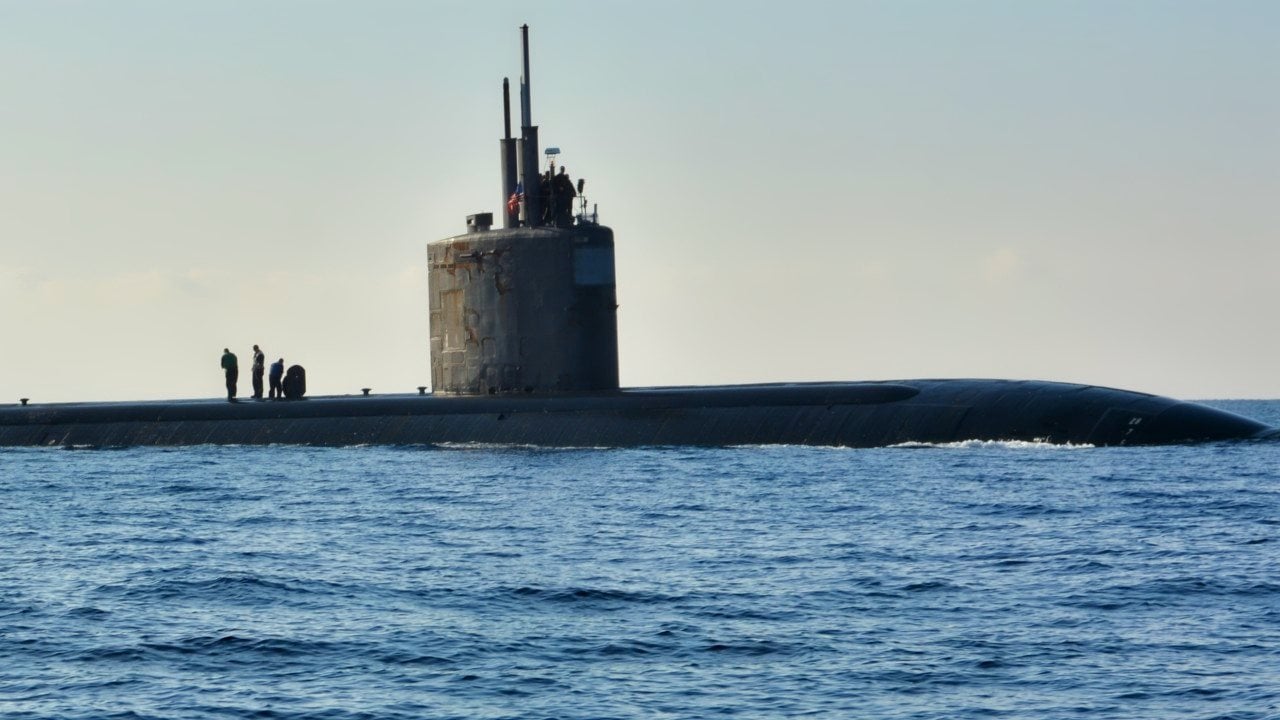Study This Photo: How a Navy Submarine 'Sank' a Royal Navy Aircraft Carrier
The USS Dallas (SSN-700), a Los Angeles-class nuclear-powered attack submarine, served the U.S. Navy for nearly 40 years, featuring prominently in Tom Clancy's The Hunt for Red October.
Summary and Key Points: The USS Dallas (SSN-700), a Los Angeles-class nuclear-powered attack submarine, served the U.S. Navy for nearly 40 years, featuring prominently in Tom Clancy's The Hunt for Red October.

-In 2013, during joint anti-submarine warfare exercises in the Middle East, the USS Dallas demonstrated its stealth by successfully evading Royal Navy surface warships and helicopters to simulate an attack on the HMS Illustrious aircraft carrier.
-A published photo revealed the submarine’s periscope as it approached undetected, implying that in a real scenario, the carrier would have been sunk. The USS Dallas was decommissioned in 2018 after an illustrious career.
USS Dallas vs. HMS Illustrious Aircraft Carrier: The 2013 Submarine War Game
Fans of Tom Clancy's debut novel The Hunt for Red October likely are familiar with the USS Dallas (SSN-700), as the Los Angeles-class nuclear-powered attack submarine features heavily in the story.
The now-retired submarine, launched in April 1979 and commissioned two years later, served for nearly 40 years with multiple deployments worldwide.
While the submarine likely never had an encounter with a Soviet vessel as noteworthy as the fictional account in The Hunt For Red October, in October 2013, SSN-700 certainly gave the crew of the Royal Navy aircraft carrier HMS Illustrious a fright during joint anti-submarine warfare (ASW) exercises in the Middle East. The American submarine was able to successfully evade surface warships and helicopters that sought to locate the USS Dallas.
More importantly, a photo was published (see above) that showed that had it been the real deal, the Royal Navy would have seen its carrier sunk.
The UK's sea service didn't try to hide that fact, as it released the photo with the description, "The periscope of the American submarine USS Dallas cuts through the surface as HMS Illustrious sails past in the morning haze."
How the Wargame Occured: Aircraft Carrier vs. Navy Submarine
According to the UK's Ministry of Defence, the 2013 exercise was broken down into three phases, and the HMS Illustrious, RFA Fort Victoria, RFA Fort Austin, USS Bulkeley along with the USS Dallas initially tested acoustic and non-acoustics sensor performance against known positions, gaining useful real-life data of the region. The second phase relied on the ships escorting HMS Illustrious as the Mission Essential Unit (MEU) along a passage whilst evading detection and simulated torpedo attacks by USS Dallas.

In the final phase, the U.S. Navy's Los Angeles-class submarine attempted to locate and destroy RFA Fort Austin as the MEU, in a holding box that simulated an anchorage, while the Royal Navy and U.S. Navy surface vessels provided protection. Additional helicopter support to the ships was ably provided by the Anti-Submarine sonar dipping Merlins embarked in HMS Illustrious along with a Seahawk ASW helicopter from USS Bulkeley providing additional surface search and weapon carrying capability.
As David Axe previously wrote for The National Interest, "Neither navy has published the results of the exercise, so it’s not clear whether Dallas got close enough in the course of the war game to simulate firing Mark-48 torpedoes at the flattop, which at 22,000 tons displacement is one of the largest ships in Royal Navy service," and he added, "But there are good reasons to assume the 7,000-ton Dallas did succeed in pretend-sinking Illustrious. In 2007 HMCS Corner Brook, a diesel-electric submarine of the Canadian navy, sneaked up on Illustrious during an exercise in the Atlantic."
Less than five years after that exercise, the USS Dallas was decommissioned in a ceremony at the Puget Sound Naval Shipyard (PSNS) in Bremerton, Washington.

During her nearly four decades in service, SSN-700 was deployed a total of 14 times and steamed over one million miles, visiting more than 30 nations worldwide. While many of the deployments were routine, some may have been more noteworthy than others – like the time the crew could lay claim to sinking an aircraft carrier.
Author Experience and Expertise: Peter Suciu
Peter Suciu is a Michigan-based writer. He has contributed to more than four dozen magazines, newspapers, and websites with over 3,200 published pieces over a twenty-year career in journalism. He regularly writes about military hardware, firearms history, cybersecurity, politics, and international affairs. Peter is also a Contributing Writer for Forbes and Clearance Jobs. You can follow him on Twitter: @PeterSuciu. You can email the author: [email protected].
All images are Creative Commons.


